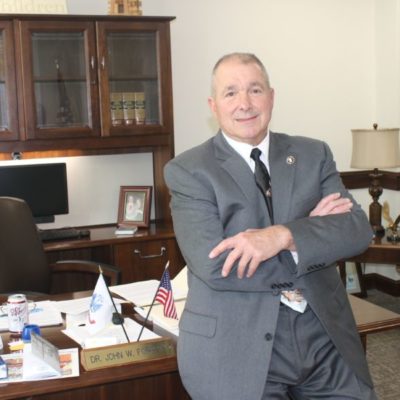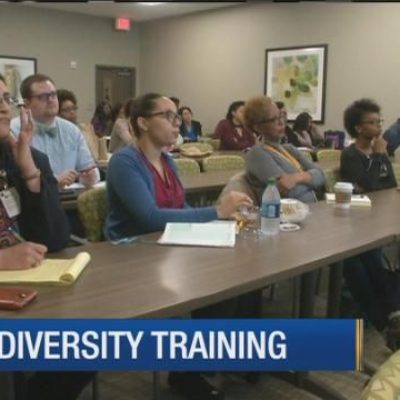More Maryland college students are crowdfunding their tuition with the help of GoFundMe
Between paying for college and helping to support his family, Towson University junior Saydu Paye is spread thin.
For most of the summer, he didn’t think he could afford to go back to school this fall.
The 20-year-old information technology major from Sparrows Point turned to a GoFundMe fundraiser for relief from skyrocketing tuition and a limited pool of financial aid dollars.
“Hello all,” he wrote in his online plea. “I am scared over the pending situation, as I am not near my financial goal for the summer.”
Thousands of students like Paye have increasingly taken advantage of crowdsourcing platforms to help them cope with steady increases in tuition and fees in Maryland and across the country. According to the College Board, public four-year university tuition for in-state students increased on average about 3 percent per year over the past decade.
The number of education-related campaigns has increased each year since GoFundMe launched in 2010, said spokeswoman Heidi Hagberg. She said that more than $70 million a year has been raised on the platform for educational initiatives, with more than 100,000 annual fundraisers for causes ranging from teachers’ back-to-school drives to students’ college tuition.
Crowdsourcing experts say members of the postmillennial generation have taken to fundraising on such sites in part to avoid the plight of their predecessors.
“Watching our generation deal with students loans … It’s daunting. It can stay with you for 30 years,” said Kamni Gupta, 31, a former executive for the DreamFund.com fundraising and savings platform. “The internet has really opened up the door for them so that they don’t necessarily have to live with student loans.”
GoFundMe hosted twice as many campaigns in 2017 as in the previous year related to college tuition in Maryland, Hagberg said in an email. And according to GoFundMe data from the 2016-2017 academic year, the most recent available, about $1.5 million was raised for Marylanders’ educational purposes in roughly 3,200 campaigns.
One such fundraiser was created by Melissa Terry of Silver Spring, a senior at the University of Maryland, College Park, who raised over $1,400 starting in November 2017.
Like Paye, she pays for college on her own, at times balancing multiple jobs with classes and internships. Without a cosigner, she doesn’t qualify for many loans, and pays for school with her salary and financial aid.
She was hesitant about using GoFundMe for tuition at first because she thought of it as a place to raise money for emergencies. But, with some coaxing from her friends, she decided to give it a try.
Ultimately, her campaign brought more than financial rewards.
“You feel alone and that you’re the only person going through this situation,” Terry, 24, said. “But then you realize all these people want to help you, and you don’t feel as alone anymore.”
Ju Fang Tseng of Silver Spring donated to Terry after learning about her from a friend on Facebook who shared a link to Terry’s GoFundMe page. Even though Tseng doesn’t know Terry, she said she felt compelled to contribute.
“I thought, ‘If everyone just donated a little bit, we could help this girl,’ ” Tseng said. “I know college is really a lot, and someone who reaches the college level should finish it.”
Martaze Gaines, a Morehouse College graduate from Baltimore, said the decision to attend the private university in Atlanta initially daunted him and his mother. But four years later, with the help of his online campaign, he’s graduated and is pursuing a master’s degree at Vanderbilt University in Nashville, Tenn. He says his mother is thrilled.
“The extra money is definitely a big help,” Gaines said, adding that he’s keeping the fundraiser active. “Even if I don’t make my complete goal, at least it will be something.”
John Quelch, dean of the University of Miami business school and an expert in consumer behavior, said widespread acknowledgement of the onerous nature of paying for college motivates many students to feel comfortable publicizing their need.
“People donating and seeking funds understand that student loan money is limited and the interest burden can be high,” he said. “It’s more kosher to put out the hat for something like this.”
Despite surging costs, more U.S. students are attending college. Between 2000 and 2016, enrollment at four-year institutions increased by about 25 percent. Meanwhile, state funding has decreased overall, meaning universities depend more on tuition revenue than in the past.
In 2018, Maryland lawmakers sought to provide relief for students in the form of legislation that offers tuition-free community college to thousands of state residents. And starting this year, more than 500 Baltimore public school students will attend community college for free as part of Baltimore’s “last-dollar scholarship program,” which funds a portion of their tuition not already covered by federal Pell Grants.
Before the advent of the internet, Quelch said, communities would often help needy students close the gaps. He said that when that failed, many put college on hold and found work that did not require an advanced degree.
Today, with greater emphasis placed on college education, financially burdened students can find resources online.
“If you have a very compelling story that requires funding to close the access gap, there’s an audience for that message,” Quelch said. “Our lives have become more global and less local, and advent of the internet is allowing communities to be supportive of your efforts outside of your immediate circle.”
Paye sought to set himself apart with a photo of himself on campus, a catchy headline on his post (“Resident Assistant might lose job!”) and a description of what he does to help his extended family in Liberia.
Towson University alumni and fellow students, several of whom he hasn’t met, donated to Paye’s GoFundMe campaign. However, he has received less than $500 out of a $9,500 goal from his fundraiser.
Relatives and members of his church helped him close the gap and get back to school this fall, just in time. Though he’s not accustomed to asking for help, he considers himself lucky.
He writes to each online donor.
“I haven’t crossed paths with you often, but the fact that you want to see me prosper … was monumental to me,” he wrote in one thank-you note.
[Read more at the Baltimore Sun]


